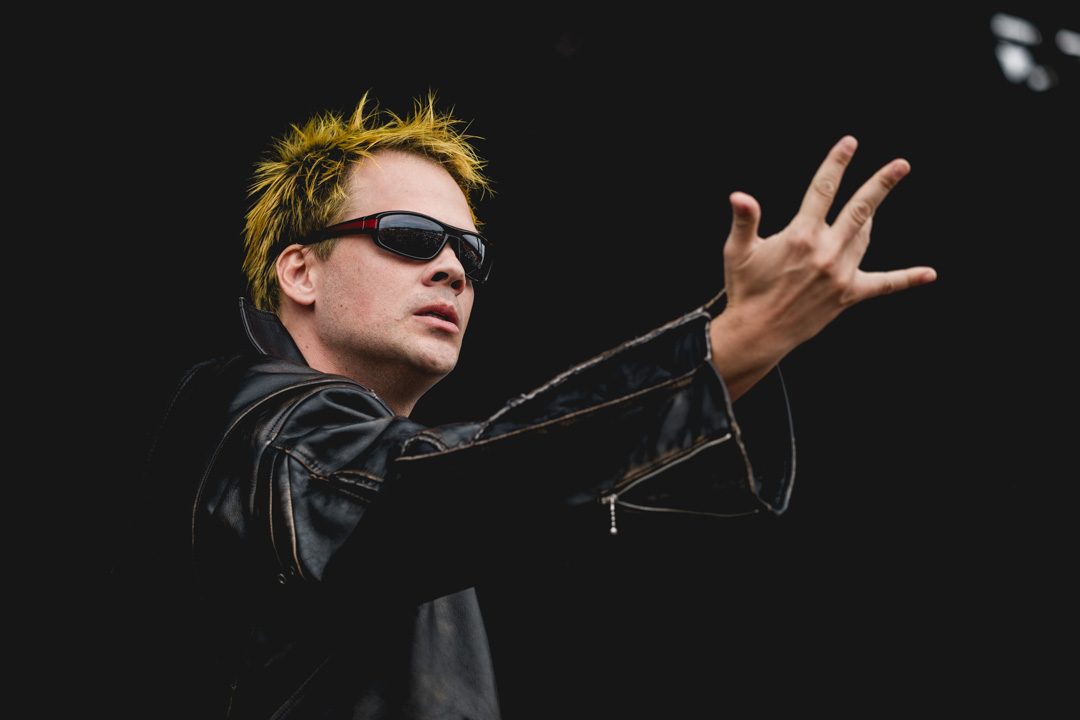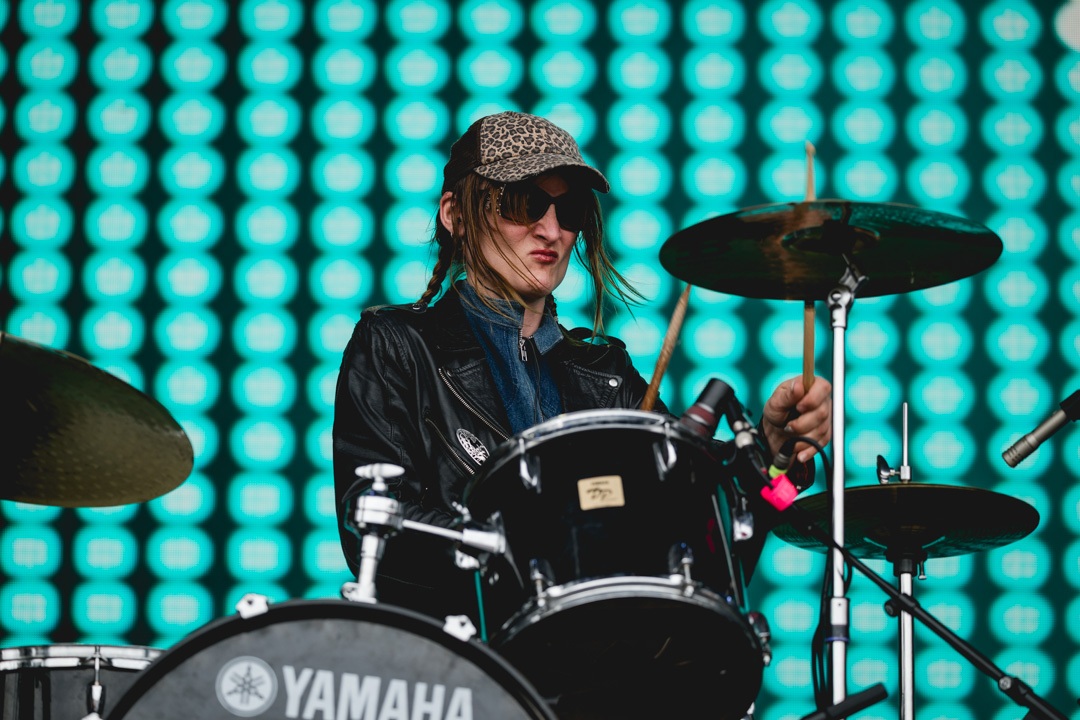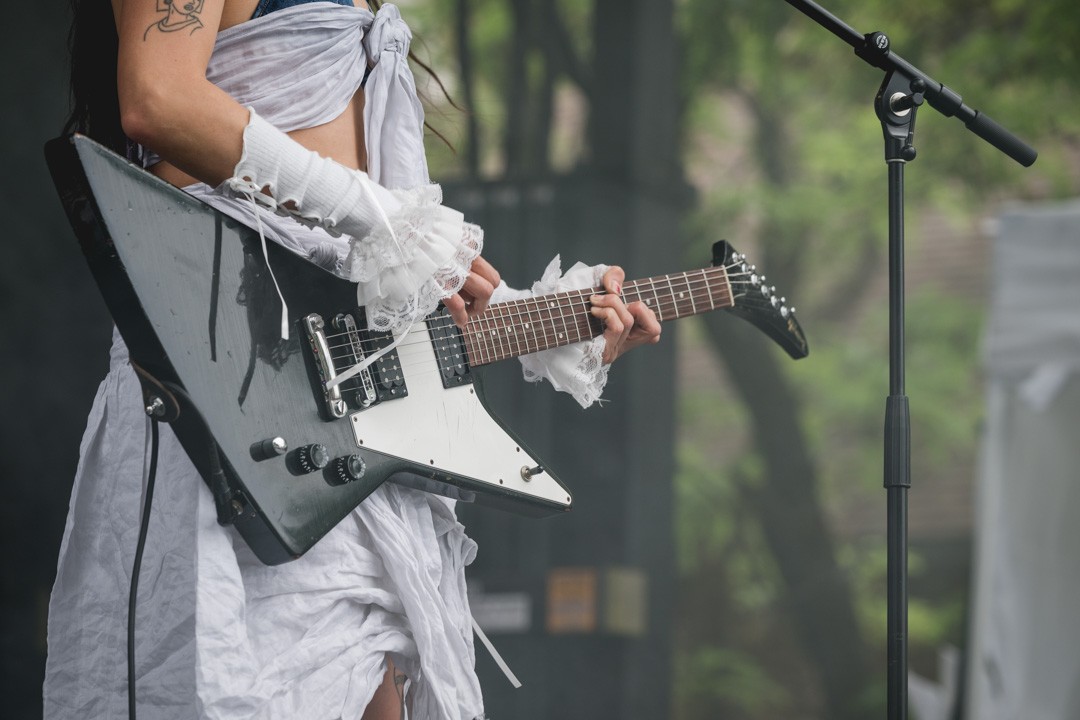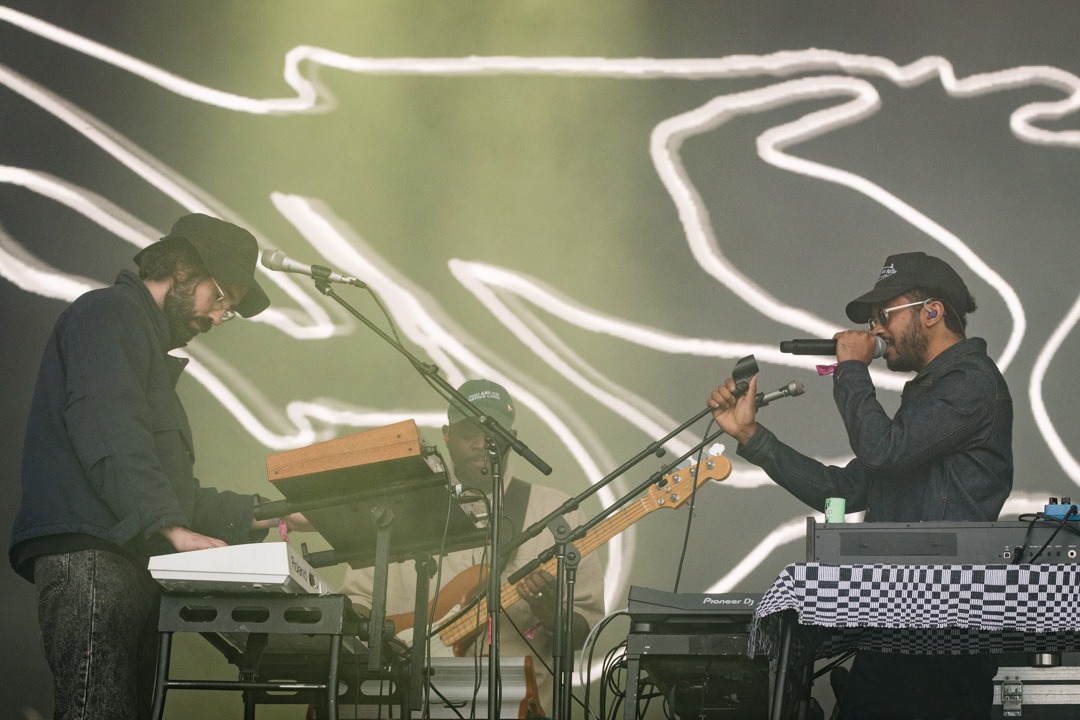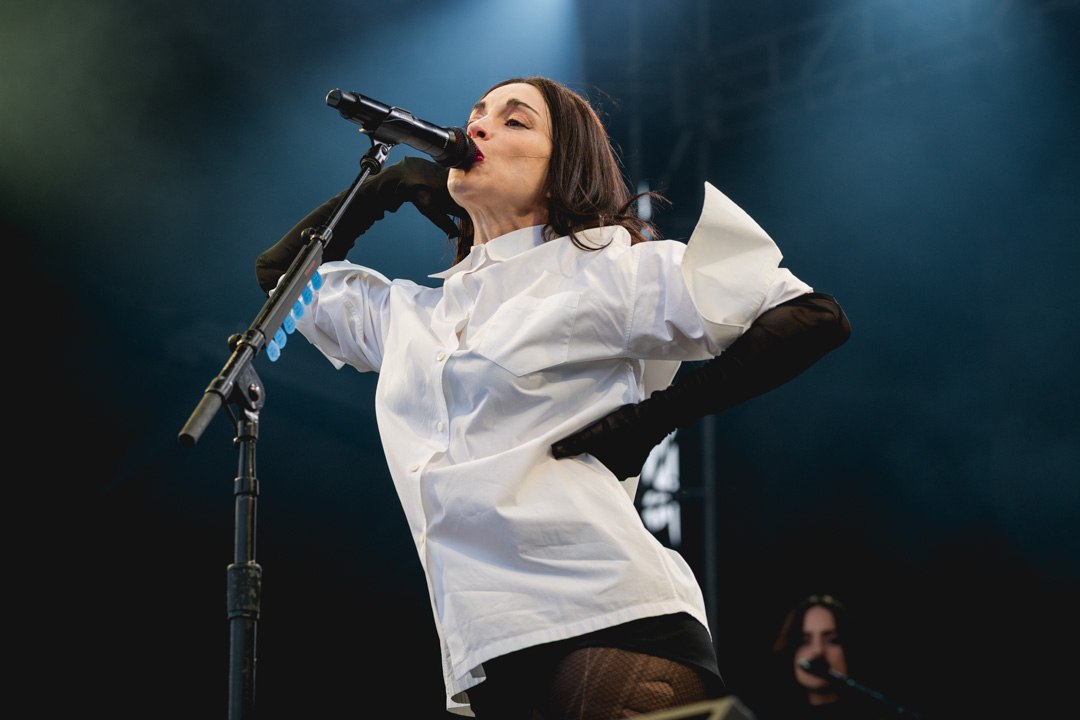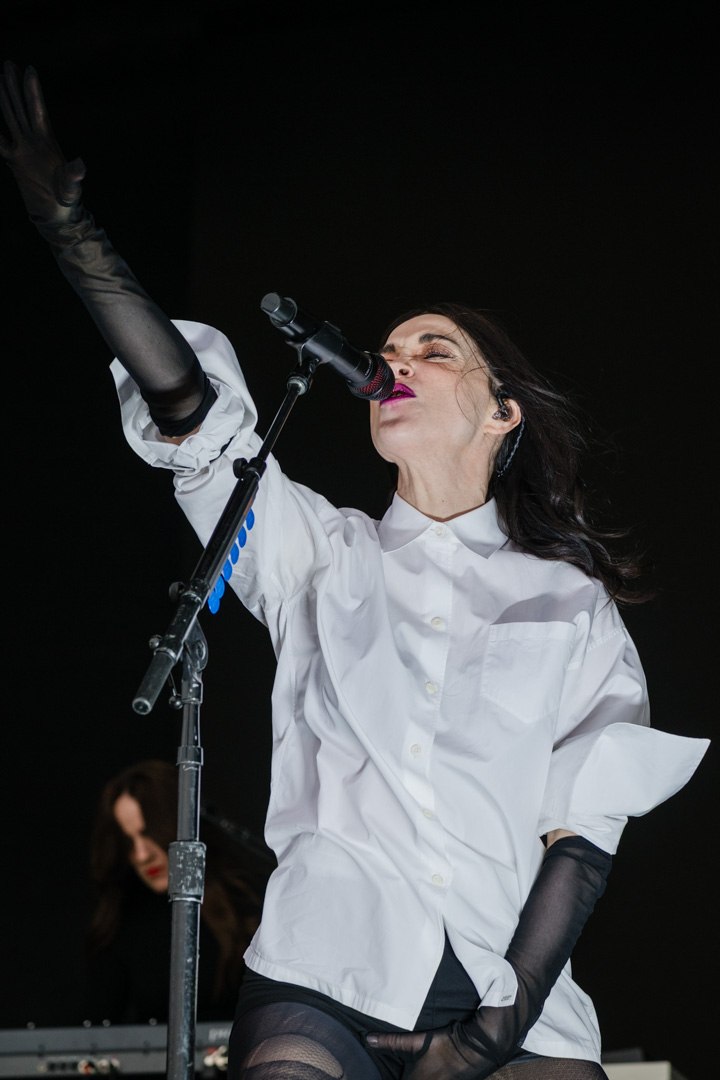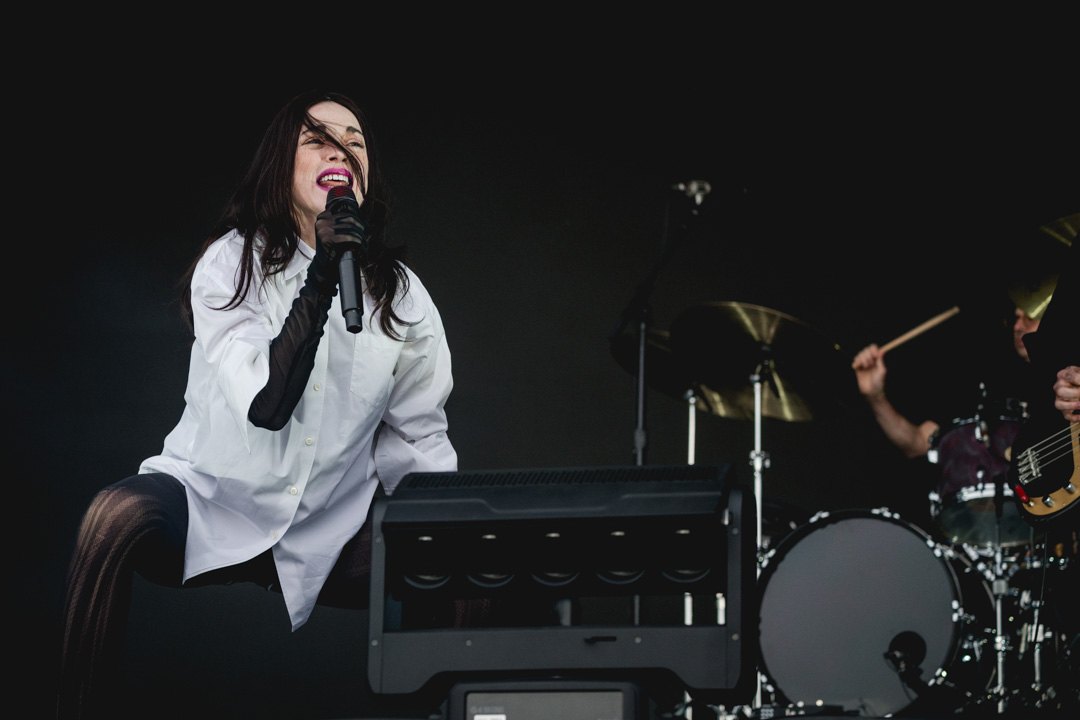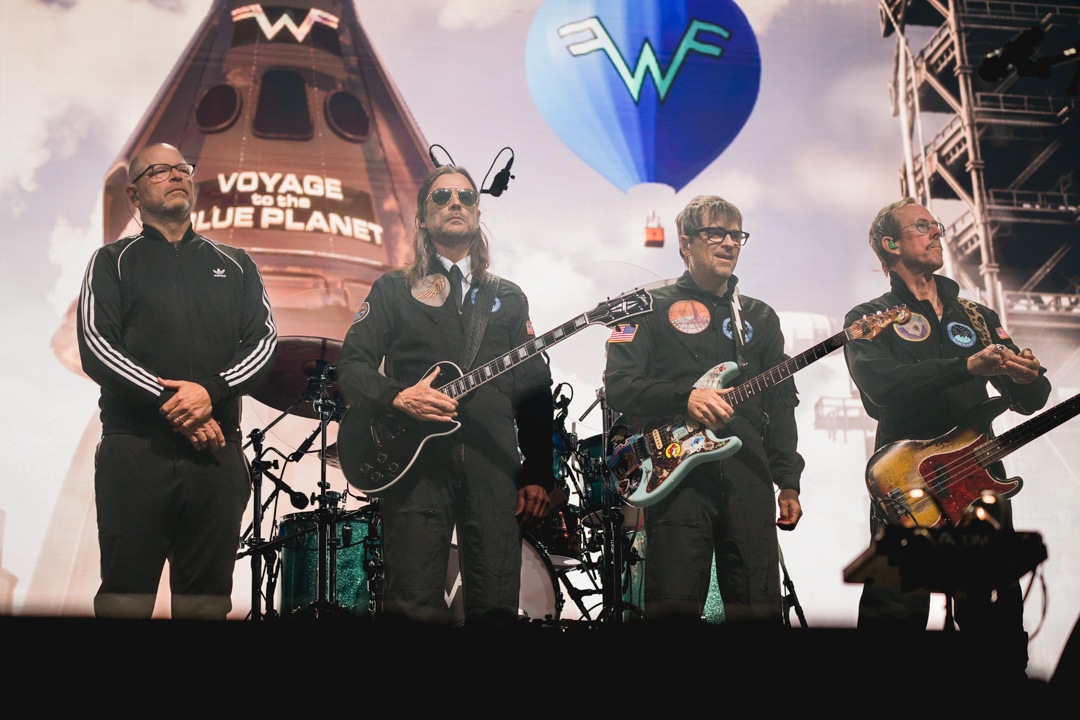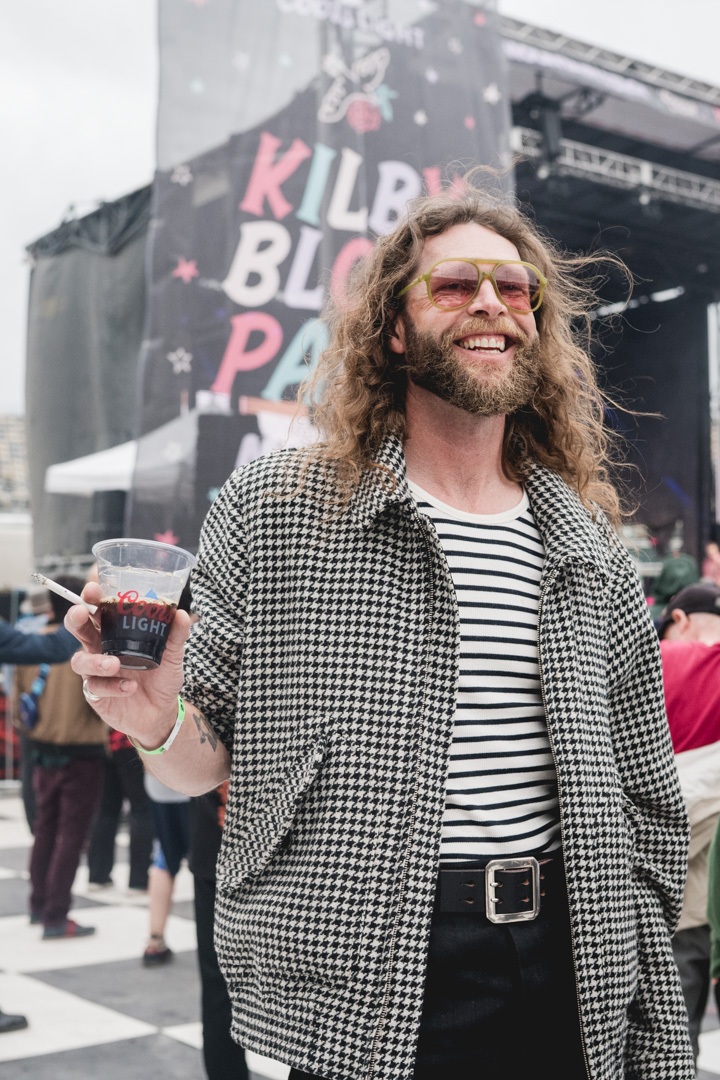As I reached the halfway point of Day Three of Kilby 2025, I assumed the line of the day would go to the electronic musician George Clanton, who said about Kilby, “This is the new Coachella; Coachella’s dead.” But ultimately, that honor goes to Hugo Burnham, drummer for Gang of Four, who emerged from behind his kit for the first and only time just as his band finished its explosive set. Using a crutch, Burnham walked to the front of the stage to leave us with two directives, of which few in the crowd would contest: “Be the resistance. Support live music.” And with that mic-drop moment, the best show I’d seen at Kilby so far came to a conclusion.


The appearance was part of a farewell tour for Gang of Four, the post-punk pioneers whose combination of angular rhythms, mutant-disco grooves and leftist politics galvanized a movement in late ‘70s England that still reverberates today—and, it must be said, influenced just about every band that has taken a Kilby stage, directly or indirectly.
Their show was exhilarating for every second, and I hadn’t left a Kilby set so sweaty or energized. Jon King is only the latest of this festival’s riveting, instrument-free frontmen, a theme this year following memorable sets from Future Islands and Perfume Genius. Whether crouching down, hands on his knees, and crab walking (crab hopping?) across the stage or lassoing his microphone cord in reckless bombast, King was an irrepressible force in a pale-pink button-down shirt. At one point, a member of Gang of Four’s crew lugged a heavy microwave oven onto a platform, and King proceeded to crush it into bits with a baseball bat, in time with the music, sending small pieces of shrapnel into the front section—a Gang of Four gambit dating back decades that never ceases to thrill.
Photogarphy by Natalie Simpson | Beehive Photo
Not to be outdone, recent addition Ted Leo’s guitar work, so pivotal to master, left a searing imprint on the audience, which started up a mosh pit just from one of his solos. Bassist Gail Greenwood, on loan from L7 and Belly, laid down notes thicker than motor oil, and shared King’s flair for performance. If this really is Gang of Four’s final tour, I can’t imagine a more marvelous send-off.
Of course, the day had plenty of other highlights as well, starting with Panda Bear, the solo project from the Animal Collective singer-songwriter, whose Day-Glo psychedelia really hit home, adding vibrancy to the overcast afternoon. The songs flowed together without breaks, functioning like an endless groove or a multipart symphony, and manifested as perhaps Kilby’s most cohesive merger of the analog and digital, the human and the synthetic. Panda Bear’s guitar fused with electronic squiggles reminiscent of vintage video games, samples of breaking glass and other quirky sound collages, while the hectic animations shuffling behind the band proved at once distracting and appropriate to Panda Bear’s avant-pop, which felt like surf music for a five-dimensional future.

Black Country, New Road (BCNR), which followed Panda Bear on the Kilby Stage, entered their set to a recording of the Band’s “The Weight,” an Americana classic and the first indication that their show would be an outlier among the festival’s most common genres. Indeed, it’s difficult to classify this outfit at all. I can think of no obvious antecedent, at least for this version of BCNR, which shifted some of its gears for their 2025 release Forever Howlong following the departure of their original lead singer, Isaac Wood. This version of BCNR, at least, jettisons typical song structures, and earworms are not their forte. It’s difficult music to dance to, and seems more tailored for cerebral venues—art museums, botanical gardens—than even a big-tent music festival like Kilby.
But the result, once you clued into its wavelength, was enchanting, and patient listeners were rewarded with more instrumental color than anywhere else in the lineup, from banjo and mandolin and bowed bass to accordion, flute, recorder and saxophone—and even whistling. If headliners Weezer are a dog of a band—cuddly, eager to please, easy to love—BCNR are a bunch of cats for whose affection you need to win. By the end, I certainly felt the purr.

I spent a minute or two with Ovlov over on the Desert Stage and was taken with the Connecticut-based band’s infectious enthusiasm for being on the Kilby lineup, which singer Steve Hartlett called “surreal as f***,” adding “we are not professionals. We shouldn’t be here.” Even when Hartlett’s guitar cable malfunctioned, leading to a delay in the set, he was quick on his feet with a rejoinder: “We wanted to drop a song anyway.” Ovlov’s sludgy post-punk hit home with many—slam-dancers moshed to nearly everything, and there were so many crowd surfers that they collided while aloft—but it was the only set I encountered that was certifiably too loud, and having neglected to bring earplugs, I ducked out of it early.
Without further ado, the aforementioned Weezer constitute the biggest “name” on the Kilby lineup this year, and their goofy, high-concept “Voyage to the Blue Planet” tour did not disappoint. The show opened with a faux news report, projected on video, that introduced the plot: The members of Weezer have been called upon to embark on an interstellar voyage to a blue plant dozens of light years away. Another video followed, this one a five-minute countdown accompanied by borrowed sounds of a rocket preparing to launch, which led to yet another video, this one showing the Weezer guys dressed as NASA astronauts and striding toward the spacecraft. One impatient wag behind me, ready for the blessed beginning of live music, joked, “skip intro, skip intro!”


He wasn’t wrong: This was much ado for a rock ‘n’ roll show. Weezer finally emerged, space suits and all, opening with newer material while projected animations progressed the story. Yes, we were expected to follow the narrative as well as the music, as Weezer’s craft soared above clouds, planted a “W” flag on the moon, traversed the planets and exited the Milky Way for the final frontier, en route to what Rivers Cuomo referred to as “an important and dangerous planet,” where only the music from their debut LP, colloquially called The Blue Album, can revive its barren topography.
“Hash Pipe” saw our boys arrive at a neon space station; “Island in the Sun” was, literally, an island in the sun. At one point, an alien called Bokkus, Weezer’s green-skinned nemesis, flew in front of them in a UFO and pelted them with desserts, which damaged the ship and forced it to crash-land on the “Pinkerton Asteroid Belt,” leaving Weezer to salvage components from a desolate wasteland in order to complete their flight. It’s only fitting that material from Weezer’s most angst-ridden album was the soundtrack for their existential crisis.

By the time the set list finally arrived at a full-album run-through of Blue—and the band had landed at its destination, with Cuomo now dressed as Captain Kirk—I all but abandoned any concept of following this kitschy nonsense and gave in completely to the music. Our group reward was the unalloyed joy of belting “Buddy Holly,” “Surf Wax America,” “My Name is Jonas” and, of course, the greatest of all modern rock singalongs, “Say It Ain’t So,” in unison with several thousand fellow devotees. The band occasionally made reference to Salt Lake City during their set, name-dropping the famous Red Iguana in the spoken-word intro to “The Sweater Song,” after which the locals in the audience went expectedly bananas. But otherwise, the band didn’t tinker with perfection, playing the songs as they appeared on the landmark album, which recently celebrated its 30th anniversary. And if we needed to go to outer space to get there, so be it.
Read our Day One and Day Two recaps of Kilby!
Read more of our music coverage and find all our Kilby Block Party reviews. And while you’re here, subscribe and get six issues of Salt Lake magazine, your curated guide to the best of life in Utah.




